#bronze age greece
Text
I was investigating old Mycenaean frescoes when suddenly something caught my eye.

Is that

Is it me or does her necklace look like it has tiny ducks? Or am I just seeing things?
#it would be so cool to think ancient women were wearing cute duck necklaces#even if I am seeing things I’m going to pretend it’s absolutely true#mycenaean#Bronze Age Greece#greek mythology#because I’m going to imagine helen of Troy/Sparta wearing this#the Iliad
332 notes
·
View notes
Photo

Happy Equinox!
Have a picture of Nyx (Night), pregnant with Hemera (Day).
This is inspired by Minoan wall paintings. The patterns on our garments are all taken from Minoan art, as is her hair and earrings. The beads she wears are glass, inspired by glass beads found in the Late Bronze Age Aegean. Her veil is inspired by later depictions of her.
#Nyx#Hemera#Equinox#Mycenaean#Minoan#Greek Gods#hellenic polytheistic#Ancient Greece#Bronze Age Greece#my art#Greek Mythology
55 notes
·
View notes
Text
I wrote the Trojan War! And now I'm reading it to you in a serialized podcast over on patreon!!! Come listen for as little as a dollar a month!
The first three episodes are now live!!!
If you've read BY HELEN'S HAND, you might remember both Paris (prince of Troy) and Polypoetes (the son of Pirithous)--well, Polypoetes and Paris both had some more to say, and retelling the Trojan War through the perspective of Polypoetes, particularly, gave me something fresh and different to chew through, and a story that you really and truly haven't heard before.
A BROKEN HORSE will be 23 episodes, and Patreon Patrons be able to listen to them FIRST!
#tagamemnon#classical mythology#greek myth retelling#greek myths#greek myth#amalia carosella#helen of sparta#helen of troy#the trojan war#greek mythology#historical fiction#bronze age greece#circe#song of achilles#madeline miller#natalie haynes
10 notes
·
View notes
Text
New worst history post! Ran across this one recently and its offenses are twofold
First, op is being asked why they portray everybody in Greek mythology as black. Their response is that populations were different in Bronze Age Greece than Classical Greece and that the universally-white representation is not accurate (the latter of which is true) and that actually they were all African (which is decidedly not true-- this thing where you make Greek mythology/history more "accurate" or "inclusive" by portraying everyone as black to me is bizarre and tragic, because a. if it's not "inclusive" enough for you as it historically was, go obsess over some other media b. world history is not "everyone was white or everyone was black," and c. there are characters in Greek myths who are clearly not ethnic Greek or what would be considered white, and we Know who they are, characters such as Andromeda [Ethiopian] , Europa and Cadmus [Phoenician] the Danaides [Libyan/Egyptian], Memnon (Ethiopian) and you could easily portray them accurately while still showing realistic diversity but NO, you randomly decide Iphigenia will be black for some reason instead 🙄. Also, it's supposedly about diversity and inclusivity, yet you never see any random Asian headcanons for these characters....)
But that's not what got this into Worst History Posts!
As evidence for the above, op goes on to say THIS

Like.
They're literally saying there are no well known human representations in Mediterranean art prior to the Renaissance.
What do you even say in response to this???
Like just off the top of my head
(Since they name dropped Alexander, we'll start with him)
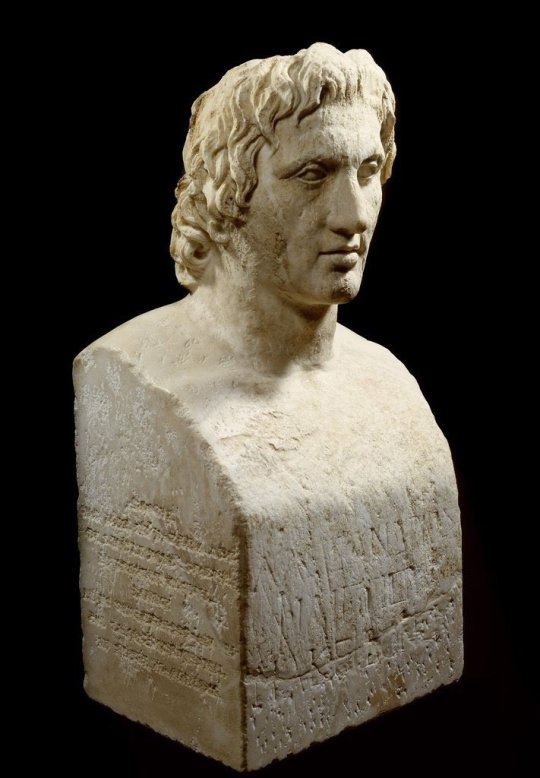
Copy (100-200 AD) of portrait carved by Alexander's personal portraitist Lysippus 330 BC (to say nothing of the zillions of other representations of him throughout Greek and Roman art)
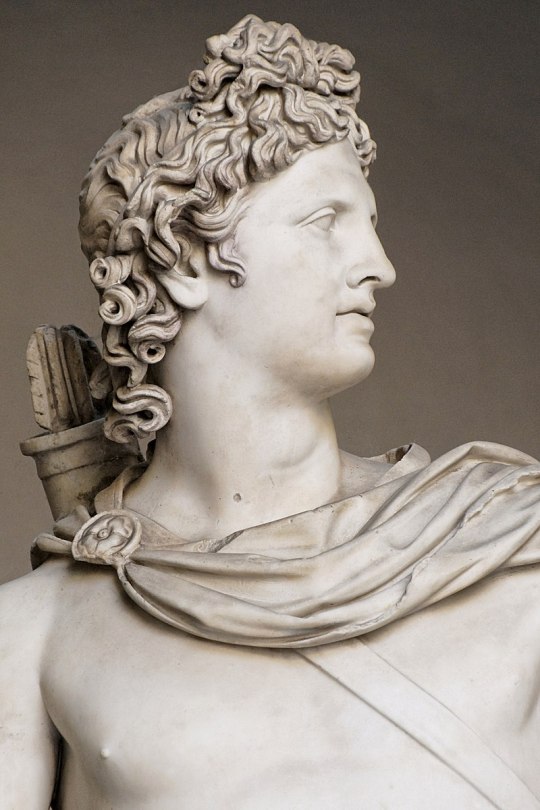
Roman, Greek-inspired or copied (120-40 AD) You know, one of the most famous pieces of classical art in the world??
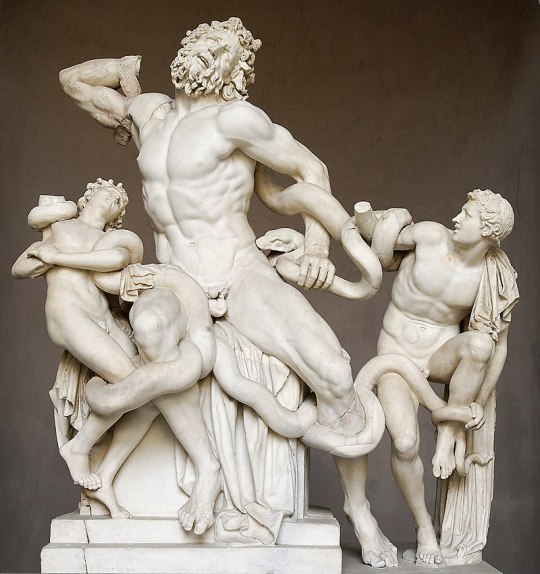
or you know, this unfamiliar and obscure little piece from 200 BC (Classical)
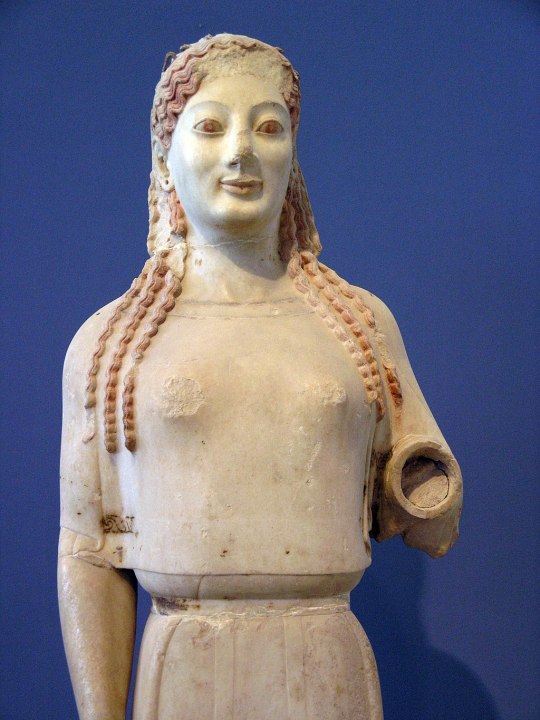
or the thousands of kores and kouros out there - 530 BC (Archaic)

or this guy, who clearly nobody's ever seen or heard of from 1550 BC (Bronze Age)
Like OP I'm sorry your uneducated ass can't think of a single piece of art from southern Europe pre-renaissance (wonder what those crazy italians were renaissance-ing back to, exactly???) but that is not a problem LITERALLY anyone else has
#worst history/mythology post series#the ancient world#ancient greece#greek mythology#ancient greek art#bronze age greece
18 notes
·
View notes
Text
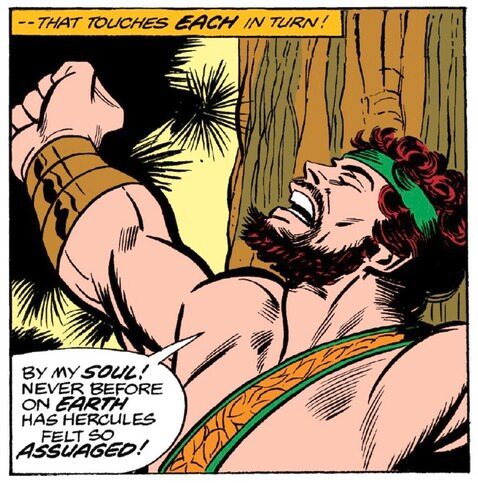
HERCULES
George Tuska art, by the look of it. So Gonna guess this is from The Champions.
#hercules#heroes of olympus#olympus#olympus stylus#olympianly#olympian gods#olympian aesthetic#marvel#marvel comics#marvel superheroes#george tuska#marvel universe#bronze age#bronze age marvel#bronze age comic books#bronze age comics#bronze age greece
5 notes
·
View notes
Text
Mal's ramblings/sources for TGOE Ch 5
Not much research for this chapter, but I do have an interesting rabbit hole on SOAP!
Did you know soap was not a thing in Mycenae? I just wanted to know what ingredients might have been used to make soap then (did they have creamy soaps, like we do?) and found that, no, soap didn't exist for them. Just like with papyrus, it missed them.
My first source was wishy washy on the subject (get it??), but only because tablet evidence is lacking.
From Olive Oil and Other Sorts of Oil in the Mycenaean Tablets [PDF] by José L. Melena:
"... we have still no evidence on soda in the Mycenaean tablets, but Crete was full of alkali plants, which might produce soap when treated with oil. The importance of the Knossos textile industry requires the existence of detergents and soap to be employed in the final stage of textile processing; the occurrence of an oil amount associated with garments (we-a(v2)-no-i) in a Mycenae document might be explained not as intended for perfuming them, but for their cleaning."
One of the sources cited for the above paragraph (supposedly) says…
"But in the absence of soap the ancient world made much use of olive oil for the toilet, and it was a normal practice to anoint the body with oil after exercise." (Cf. J. Chadwick, The Mycenaean World, p. 122) (emphasis added my me)
But then another one says… this complicated mess of citations:
Cf. M. Levey, "The Early History of Detergent Substances", Journal of Chemical Education 31, 1954, pp. 521-524. "In Crete soap plant Saponaria officinalis L. grows in wet spots, cf. I. E. Chabáki, Φυτά καί Βοτάνια της Κρήτης, ρ. 312, s.u. Τσουένι; and a further source of alkali is Salsola carpatha L. and S. aegeaea L., cf. O. Rackham, op. cit., p. 297. See for parallels H. de Genouillac, "Le blanchissage au savon à l'époque des rois d'Ur", Revue d'Assyriologie 7, 1909, pp. 113 f.
And what I got from that mess (because I didn't follow up on these) is that Crete has a soap plant that may have enough alkali to be used for soap. But, like, maybe not enough to share I guess?
But I just… I didn't want that to be the answer. So I checked another source and found this line from Bathing at the Mycenaean Palace of Tiryns by Joseph W. Shaw that quotes another source:
Concerning perfumed oil, Shelmerdine writes that it "was a common offering to the gods, and was also used for medicinal and cosmetic purposes. It was particularly valued in a world without soap." (emphasis added by me)
Shelmerdine is one Cynthia Wright Shelmerdine, who wrote a book called "The perfume industry of Mycenaean Pylos."
Long story short, Patroclus and his contemporaries never used soap. Oops. Well… I guess I'll try to remember for future fics. For now, getting lewd with the sewds. Suds. Whatever.
#sources#the gift of eleos#bronze age greece#fan fic stuff#fan fiction#just fanfic things#greek mythology
0 notes
Text



My most recent make is this ancient Minoan ensemble! It consists of a tunic (heanos) worn under a flounced wraparound skirt shaped like a double-bladed axe (labrys). Despite how heavy the linen skirt is, the entire outfit is surprisingly easy to move around in. I even waded into the river to rescue a bee!
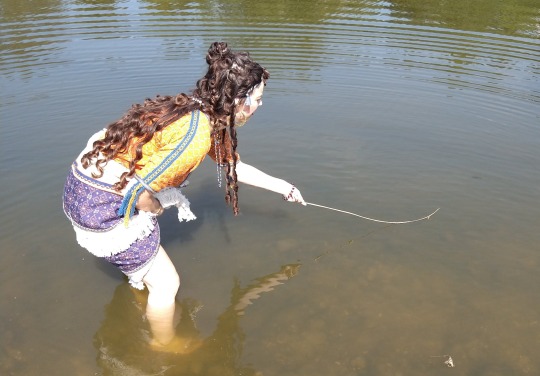
Hot Girl Activities
#minoan crete#minoan#ancient greece#greek mythology#historical costuming#bronze age#my costumes#clothing reconstruction#hot girl summer
5K notes
·
View notes
Text
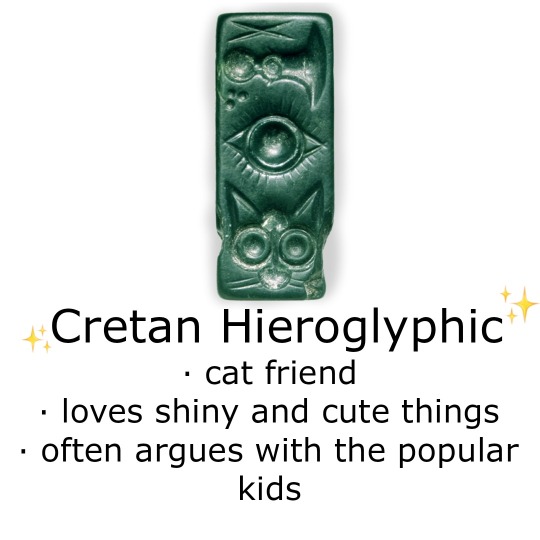
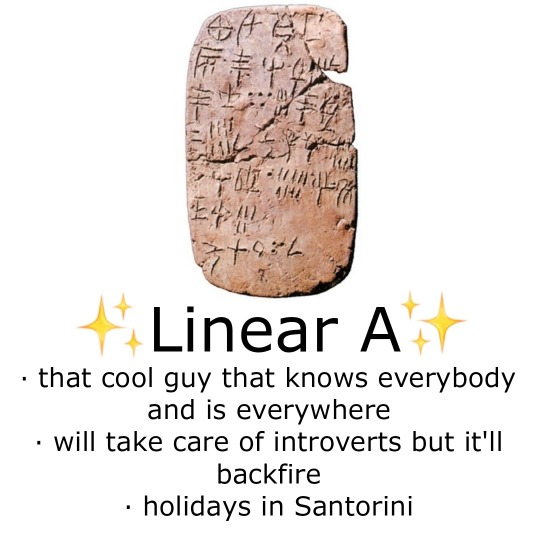


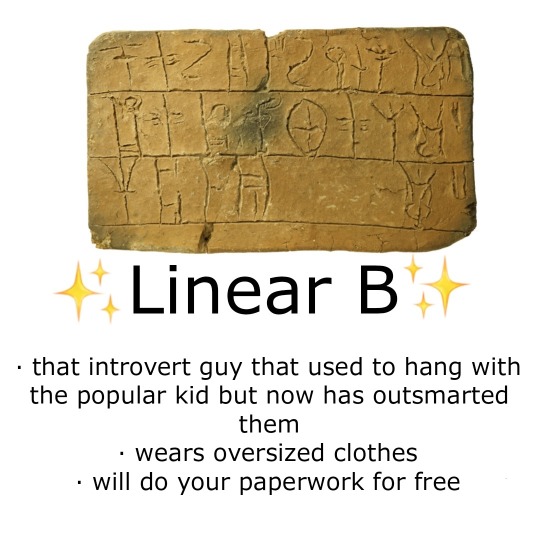

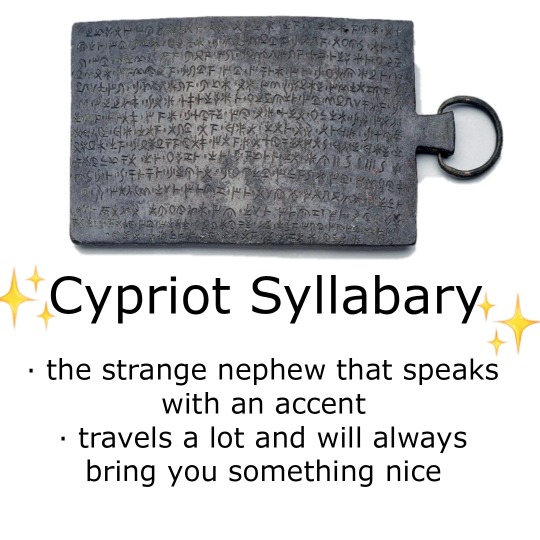
✨ tag yourself ✨ but with Aegean Scripts! Mainly Bronze Age, with a sprinkle of Iron Age (Cypriot Syllabary).
#tagamemnon#ancient greece#crete#minoan#scripture#history#classics#bronze age#cretan hieroglyphic#linear a#phaistos disc#linear b#cyprominoan#cypriot Syllabary#arkalochori axe#archaeology#tag yourself
3K notes
·
View notes
Text
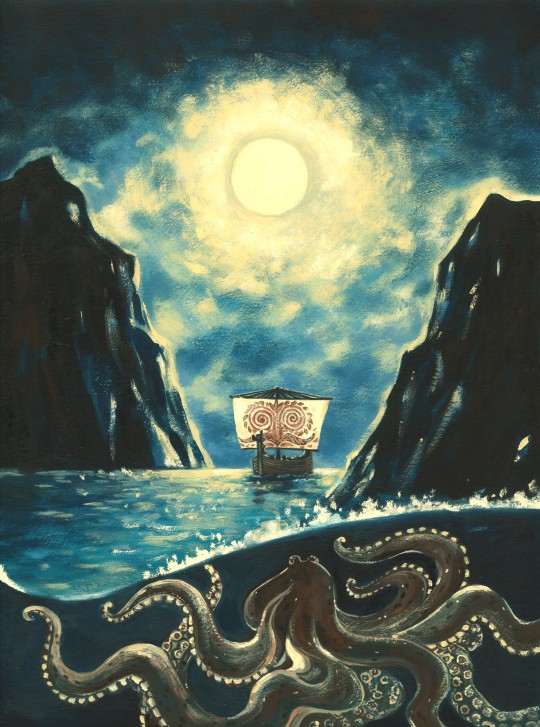
Between Scylla and Charybdis (Odyssey) 2024
#marysmirages#ancient greek mythology#mycenaean greece#odyssey#scylla and charibdis#odysseus#bronze age#painting#iliad#octopus#ship#homer
545 notes
·
View notes
Text
Prehistoric Figurine of a Harp Player, from the Cyclades (Greece), c. 2700-2300 BCE: this figurine was shaped from a block of solid marble and then slowly sanded into form using pumice and emery

The figurine depicts a musician with a frame harp, an instrument that originated in the Near East and then later spread to the peoples of the Aegean. A sound box forms the section along the base of the instrument, and a small protrusion can be seen near the top of the harp's frame; some experts have argued that this protrusion might represent an ornamental carving of a waterfowl's head, while others argue that it represents a musical extension that facilitates the projection of sound (a feature that often appears on the stringed instruments of the ancient Near East).
This piece measures 35.8cm (about 14 inches) tall.
Musical performances like this are rarely depicted in Cycladic artwork. Depictions of male characters are similarly rare, representing only 5% of the Cycladic sculptures that are known to exist. When male figures are depicted, however, they are frequently shown playing musical instruments, as seen here.

Figurine of a Harpist, c. 2800-2700 BCE: a similar example of a Cycladic sculpture that features a musician with a frame harp
The Museum of Cycladic Art provides a more detailed explanation of the process by which these figures were created:
As we can deduce from the few unfinished figurines that have been discovered so far, the first step in the process was to roughly shape the raw piece of marble into a figure by the impact of a mallet. Emery powder was then used to abrade the surface until it obtained the desired shape and size. Once the desired shape was achieved, the surface was smoothed carefully before the fine work of carving the details started. At the end, the figurine was polished to a high degree that is still amazing.
And according to The Met:
Many of these figures, especially those of the Spedos type, display a remarkable consistency in form and proportion that suggests they were planned with a compass. Scientific analysis has shown that the surface of the marble was painted with mineral-based pigments—azurite for blue and iron ores, or cinnabar for red.
The Cycladic Islands (also known as the Cyclades) are a group of about 30 separate islands in the Southwest Aegean, off the coast of mainland Greece. These islands contain a wealth of natural resources, including marble, emery, pumice, obsidian, and an assortment of precious metals. The prehistoric peoples of the Cyclades made use of these resources for many different purposes, but the marble figurines/sculptures that they crafted during the Bronze Age are perhaps their most famous creation.
The vast majority of these figurines are stylized depictions of the female form. The cultural significance of the sculptures remains unclear; they may have simply been created as decorative pieces/artwork, without any additional function, or they may have been used as fetishes, totems, religious idols, grave goods, or votive offerings.
Sources & More Info:
The Getty Museum: Figurine of a Harp Player
The Met: Cycladic Harp Player
The Met: Early Cycladic Art and Culture
The Museum of Cycladic Art: Techniques
#archaeology#history#artifact#ancient history#prehistoric art#art#sculpture#music#greece#cycladic#bronze age#anthropology#harp
1K notes
·
View notes
Text
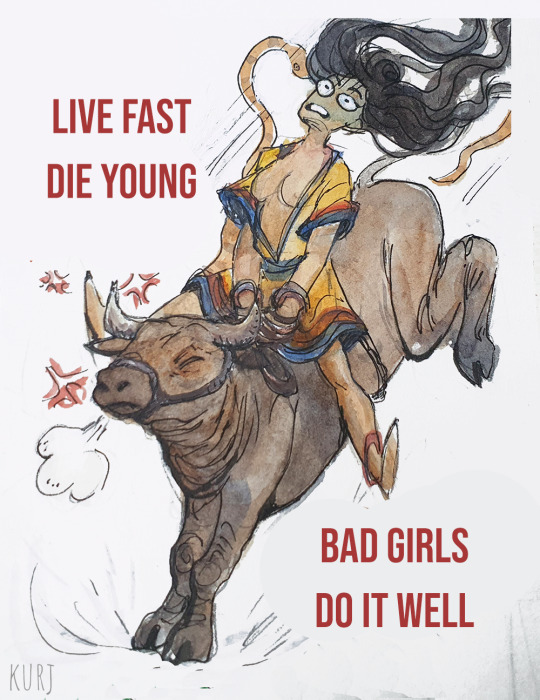
don't ask
#minoan#tagamemnon#ancient greece#bronze age aegean#watercolor#kurjdraws#had to get this out of my head oh god#quick scribble and back to job searching#my minoan art
427 notes
·
View notes
Text

Minoan Fringe Fit
A fashion staple for your Bronze Age men.
Minoan Fringe Kilt
Skirt category
Base game compatible
18 swatches
Disallowed for random
Adult male
Minoan Fringe Top
Shirt category
Base game compatible
18 swatches
Disallowed for random
Adult male
TOP DOWNLOAD - Dropbox (no ads)
SKIRT DOWNLOAD - Dropbox (no ads)
#my cc#my cas cc#MY CC#S4CC#TS4CC#SIMS 4#SIMS 4 CC#TS4MM#MINOAN#CRETE#CRETAN#GREEK#GREECE#BRONZE AGE#TS4 HISTORY#TS4 HISTORY CC#TS4 HISTORIC#TS4 HISTORIC CC#TS4 CAS#TS4 MMCC#TS4 SKIRT#TS4 BOTTOMS#TS4 MALE CC#TS4#SIMS#S4MM#MAXIS MATCH CC#TS4 HISTORICAL#S4 HISTORY#S4 HISTORICAL
190 notes
·
View notes
Text
youtube
Despite knowing absolutely nothing about weaving, I keep having to get more and more information on Bronze Age textile production as I work on The Dancing Ground. I've looked at a lot of resources but this short video from the University of Warsaw was very helpful-- it covers Bronze Age Greek tech specifically and gives visual examples of objects as well as a of several looms in use, even pausing to let the viewers hear what weaving on a warp-weighted loom sounded like-- in other words, a priceless resource for anyone writing the period, so I thought I would share! They have a video on spinning in the Bronze Age as well ;)
#bronze age#minoans#mycenaean#ancient greece#bronze age greece#mycenae#historical reference#weaving#spinning#textiles#Youtube#writing resources#writing research#historical research#historical fashion
16 notes
·
View notes
Text
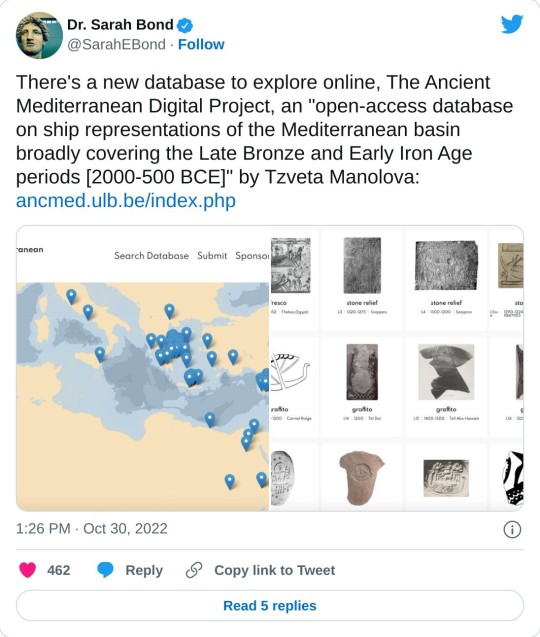
#tagamemnon#bit ill so lazily scrolling thru twt pt 2#ancient greece#ancient rome#late bronze age#early iron age#resources
1K notes
·
View notes
Text
Mal's ramblings/sources for TGOE Ch 4
PRAYING TO HERMES
Supplication
I bumped this one from the very last note to the very first, because it was my MOST heavily used source. I mentioned it back in chapter 1, and subsequently read all of it, but it turns out The Nature of the Act of Supplication is only Chapter 1 of Gaye McSweeney's masters thesis Acts of Supplication in Ancient Greece, which I will find the time to read, because holy cow it's fantastic!
I used so much from it, I can't even list it all. It's the backbone of the whole chapter. That said, all of this focuses on what's seen in the epics unless otherwise stated. I wanted to focus on Mycenaean traditions, but there's very little information available.
Suppliants bough
I mentioned in chapter 1 about an olive branch being used as a suppliants bough, but hair may be used in its place in certain circumstances. Supplication to a chthonic deity is one. (See Acts of Supplication in Ancient Greece.)
Self-abasement and mutilation
Self-abasement means to lower oneself, and there are various things you can do to achieve this depending on your need. In this chapter, it's done three times. Once when Patroclus dons the only thing he owns; again when he kneels before the hearth; and lastly when he tears the tunic, lacerates his chest, and laments.
During the prothesis (lying in state) part of a funeral, mourners cry, prostrate over the body, tear their clothing, lacerate their flesh, tear out their hair, and cover themselves with dirt or ash.
During supplication, the supplicant must abandon their dignity and honor, and behave in the "manner of a slave."
For both, the goal is to achieve pity, but funereal self-abasement has special meaning on top of this; McSweeney mentions theories on these acts mimicking violence used to protect the living. And since you can no longer protect the dead, the mourners turn the acts on themselves. (I took this a step further in the narrative.)
I did look for specific words for the different acts, or for the practice as a whole, but couldn't find any. Self-abasement, self-effacement, self-mutilation, disfigurement, etc. are the closest words, it seems, and these first three are the words used by McSweeney. For all I know, there are words, only I can't read them, but I've chosen to imagine there are no words for it in the old language because they didn't think of it like we do. I'd love to be corrected if someone does know!
All About Hermes
The chapter is named after the two forms of Hermes, his Ouranic (Olympic) form and his Chthonic (Underworld) form.
Hermes is called Cyllenius because he was born on Mt. Cyllene in the most common story. In his Chthonic form, the story goes that he was born of Dionysis and Aphrodite. But I am sticking with Zeus/Maia, since that seems to be what Hades (game) did.
Again I use Theoi (Hermes section) a LOT for this, and use Neokoroi for the offerings.
For both prayers, the Orphic Hymn 28 to Hermes and Hymn 57 to Chthonian Hermes were models, especially the last line of 28, but all 5 hymns on Theoi were inspirational in some way. So was Aeschylus' Libation Bearers.
I also looked into how current Hellenic worshipers structure their prayers. Interestingly, it seemed to mostly align with the Orphic hymns. Still, it was more inspirational than a guide.
Statue of Hermes
It's just called the Statue of Hermes. I really tried to find something more significant for the scene, but gentle Hermes with his hand on a tortoise (which he used to create a lyre so "gentle" might be a stretch) seemed appropriate.
Fumigation
The Orphic hymn mentions which herbs to fumigate with. The why I made up. Maybe it's in my head from somewhere (pagan practices or something), so if I did steal it from somewhere specific, sorry?
Barley
I legitimately wondered "what about barley meal?? Should they just throw flour?" (Do not throw flour at a fire! It turns into a cloud of flame!) While, yes, you can use alternatives when you don't have barley meal, Odysseus did, it's really only necessary for animal sacrifices, I guess.
GRIEF AND MOURNING
I cribbed heavily from Aeschylus' Libation Bearers, which takes place not long after the Iliad, so the funerary practices would align, even if Aeschylus wasn't a peer of Homer. (They both lived long after the Bronze Age anyway!)
As for research, Portraits of Grief: Death, Mourning and the Expression of Sorrow on White-Ground Lêkythoi [PDF] by Molly Evangeline Allen was the biggest help, though I only read the section on Male Mourning.
Gendered behaviors
Men and women had specific roles when it came to funerals, and specific behaviors tended to be more feminine or more masculine, though there were shifts throughout the centuries.
That said, similar to how we used to (or maybe still do) view crying as a womanly thing to do, men were not unknown to express themselves in ways that weren't particularly manly. There are examples of male laments, hair cutting, and skin lacerating (at least in the epics and plays).
McSweeney and Allen (authors of Acts of Supplication in Ancient Greece and Portraits of Grief... respectively) both discuss gendered differences in the varied acts of mourning (and supplication). I also found a paper discussing Male Lament, but only the abstract. Link below in the section on lamentation.
Tearing the breast/chest/cheeks/hair
From my 21st century, American perspective, this is a significant act of grief. Either it's just dramatic enough to find its way into many stories, or it was more common than I would expect. Though, it was significant enough for Solon to make a law about it, so I guess it could be both.
Still, it is a prescribed act, as McSweeney references in The Nature of the Act of Supplication. Meaning it's expected, and there are rules around it. It's not, necessarily, a spontaneous act of grief.
Cutting the hair
When I read that a character cuts their hair for the dead, I read it as them going full Mulan.
However, there is precedent for using locks rather than chopping off all of a mourner's hair. I direct you to Aeschylus' tragedy, Libation Bearers. As it opens, Orestes, son of Agamemnon, cuts 2 locks from his hair, and sets them on his father's tumulus (grave mound).
Lamentations
Briseis, Helen, Achilles, and so many other characters lament within the Iliad, but it's not in a way I would think of as lyrical, probably because I have trouble reading lyrics in song. (It was annoying whenever there was singing in LOTR, ngl.)
But, I made an effort to express grief in song, since it's a huge part of funeral rites. Even men sing.
Men and women (according to the above source) do lament differently, though. So I did a fair amount of looking into lamentations.
First, I read and re-read many of the lamentations within the Iliad. External sources include An Ancient Greek Lament Form by Charles H. Cosgrove (though I could only read that first page), Athenaeus' The Learned Banqueters, Drowning Sorrows: Archilochus fr.13 W. in its Performance Context [PDF] by Deborah Steiner, Aeschylus' Libation Bearers, the previously mentioned abstract from Male Lament and the Symposium by Gregory Jones, Portraits of Grief... [PDF] by Molly Evangeline Allen (which had a small quote from Euripides' Alcestis), and one actual recorded lament I couldn't find in my YouTube history, but was definitely in one of these documents… I didn't use it to compose anything though.
I felt awkward writing a song when I'm a terrible songwriter, especially when it's supposedly coming from a culture where songs and singing are so important. Or at least seems to be important. But I pushed through and came up with something, even if there's only 1 ½ lines in the actual narrative.
Nico's chant
This is straight up pulled from Greek Orthodox funeral rites. It's really just the Trisagion (a specific chant).
OTHER THINGS!
Hippodameia Briseis
I've thought a lot about whether to use the name Hippodameia or Briseis. It's easy to say "Briseis means Daughter of Brises" and that her first name, Hippodameia, is found in Homer's scholia (notes, basically), and call it a day. But it's not nearly that clean.
While I've read this information all over the place, I'd like to direct you to the book Homeric Variations on the Lament by Briseis by Casey Dué. It's intensely fascinating, but I'm using it for the only source here because the content and footnotes aggregate the information I'd read elsewhere. And it has an argument to make on compressed stories within the epic that I like.
Long-story-short, we have 3 origin stories for Briseis, which Dué illustrates are all intertwined in the narrative of the Iliad. Only one of the origins calls her Hippodameia, daughter of Brises, King of Pedasos.
There are arguments to be made that Briseis may be her given name, and that Briseus doesn't exist. Or that she and her father both are named for their home town of Brisa, a town on Lesbos, which pairs poetically with Chryseis, daughter of Chryses, both from the town of Chryse.
As for me, I chose my route. It'll have nice poetry itself later. Though, I must admit, it's a knee-jerk reaction that I don't want to call a woman exclusively by her father's name, like she has no existence outside a man (very Western of me, I know), and that definitely played into my decision to even look into this. But I digress.
PS Hippodameia means "horse tamer" (Briseis means "martial strength") and Deidameia (Achilles' first wife) means "she who is patient in battle." The word "dameia" in both names means "tamer", so I'm curious to know how "Deidameia" reached such a non-literal meaning, unlike Hippodameia, which is extremely literal.
Patroclus "related" to the gods
t/w: incest (Should this be a t/w? It's mythology, I just assume there's incest.)
All this came from hunting through Wikipedia. There are variations on who got with who and who had which baby, so where there was disagreement I went with either the more popular, the one that was the least confusing, and/or the one I liked better.
We're going to skip the 5 potential mothers of Patroclus and only look at his paternal lineage.
Patroclus' grandmother was the naiad Aegina, daughter of the river god Asopus and the naiad Metope, herself daughter of the river god Landon. And according to Hesiod's Theogony, rivers were all born of Oceanus and Tethys, so both Asopus and Landon would be their get. That puts Patroclus 4 generations removed from titans (and Zeus on his grandfather's side), and 2 from gods (nymphs are minor deities, after all).
So, yeah. Godly relations.

Nyx not Persephone
In the chthonian prayer, I explicitly name Nyx as the empress of the underworld, not Persephone. This comes from Hades, the game.
(Mild spoilers? It's all set-up info.) At the start of the game, Persephone is not known to be the Queen of the Underworld. Instead, Nyx is known as the other half of the partnership, though her relationship with Hades himself is ambiguous. The gods are told, at some point, that she and Hades had a son together, but I don't assume the mortals know about Zagreus.
Polytheism Banned in Greece
The spread of Christianity killed polytheism in the Roman empire. In Greece, it was made legal again in 2006.
Cutting condoms
They still teach this in sex ed, right? You can cut the tip and bottom off a condom, and cut it up the side to create a dental dam.
#the gift of eleos#sources#bronze age greece#just fanfic things#greek mythology#fan fiction#fan fic stuff
0 notes
